Thermodynamic signature of DNA damage: characterization of DNA with a 5-hydroxy-2'-deoxycytidine·2'-deoxyguanosine base pair
- PMID: 22332945
- PMCID: PMC3319050
- DOI: 10.1021/bi3000269
Thermodynamic signature of DNA damage: characterization of DNA with a 5-hydroxy-2'-deoxycytidine·2'-deoxyguanosine base pair
Abstract
Oxidation of DNA due to exposure to reactive oxygen species is a major source of DNA damage. One of the oxidation lesions formed, 5-hydroxy-2'-deoxycytidine, has been shown to miscode by some replicative DNA polymerases but not by error prone polymerases capable of translesion synthesis. The 5-hydroxy-2'-deoxycytidine lesion is repaired by DNA glycosylases that require the 5-hydroxycytidine base to be extrahelical so it can enter into the enzyme's active site where it is excised off the DNA backbone to afford an abasic site. The thermodynamic and nuclear magnetic resonance results presented here describe the effect of a 5-hydroxy-2'-deoxycytidine·2'-deoxyguanosine base pair on the stability of two different DNA duplexes. The results demonstrate that the lesion is highly destabilizing and that the energy barrier for the unstacking of 5-hydroxy-2'-deoxycytidine from the DNA duplex may be low. This could provide a thermodynamic mode of adduct identification by DNA glycosylases that requires the lesion to be extrahelical.
Figures


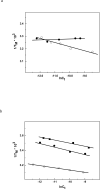

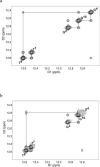
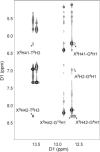
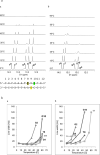

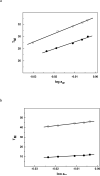
Similar articles
-
Solution structure of an 11-mer duplex containing the 3, N(4)-ethenocytosine adduct opposite 2'-deoxycytidine: implications for the recognition of exocyclic lesions by DNA glycosylases.J Mol Biol. 2000 Feb 25;296(3):851-61. doi: 10.1006/jmbi.1999.3490. J Mol Biol. 2000. PMID: 10677286
-
Solution structure of a DNA duplex containing 8-hydroxy-2'-deoxyguanosine opposite deoxyguanosine.J Mol Biol. 2003 Jan 17;325(3):433-42. doi: 10.1016/s0022-2836(02)01272-x. J Mol Biol. 2003. PMID: 12498794
-
Effects of 3,N4-ethenodeoxycytidine on duplex stability and energetics.IARC Sci Publ. 1999;(150):169-77. IARC Sci Publ. 1999. PMID: 10626218 Review.
-
A study of 7-deaza-2'-deoxyguanosine 2'-deoxycytidine base pairing in DNA.Nucleic Acids Res. 2007;35(18):6181-95. doi: 10.1093/nar/gkm670. Epub 2007 Sep 12. Nucleic Acids Res. 2007. PMID: 17855404 Free PMC article.
-
Solution structures of DNA duplexes containing the exocyclic lesion 3,N4-etheno-2'-deoxycytidine.IARC Sci Publ. 1999;(150):179-89. IARC Sci Publ. 1999. PMID: 10626219 Review. No abstract available.
Cited by
-
Looking for Waldo: a potential thermodynamic signature to DNA damage.Acc Chem Res. 2014 Apr 15;47(4):1446-54. doi: 10.1021/ar500061p. Epub 2014 Apr 4. Acc Chem Res. 2014. PMID: 24702131 Free PMC article.
-
Identification and characterization of human apurinic/apyrimidinic endonuclease-1 inhibitors.Biochemistry. 2012 Aug 7;51(31):6246-59. doi: 10.1021/bi300490r. Epub 2012 Jul 24. Biochemistry. 2012. PMID: 22788932 Free PMC article.
-
RNA Interference-Guided Targeting of Hepatitis C Virus Replication with Antisense Locked Nucleic Acid-Based Oligonucleotides Containing 8-oxo-dG Modifications.PLoS One. 2015 Jun 3;10(6):e0128686. doi: 10.1371/journal.pone.0128686. eCollection 2015. PLoS One. 2015. PMID: 26039055 Free PMC article.
References
-
- Imlay JA, Linn S. DNA damage and oxygen radical toxicity. Science. 1988;240:1302–1309. - PubMed
-
- O'Brien PJ. Radical formation during the peroxidase catalyzed metabolism of carcinogens and xenobiotics: the reactivity of these radicals with GSH, DNA, and unsaturated lipid. Free Radic. Biol. Med. 1988;4:169–183. - PubMed
-
- von Sonntag C. The chemistry of free-radical-mediated DNA damage. Basic Life Sci. 1991;58:287–317. - PubMed
-
- Dizdaroglu M. Chemical determination of free radical-induced damage to DNA. Free Radic. Biol. Med. 1991;10:225–242. - PubMed
Publication types
MeSH terms
Substances
Grants and funding
LinkOut - more resources
Full Text Sources

